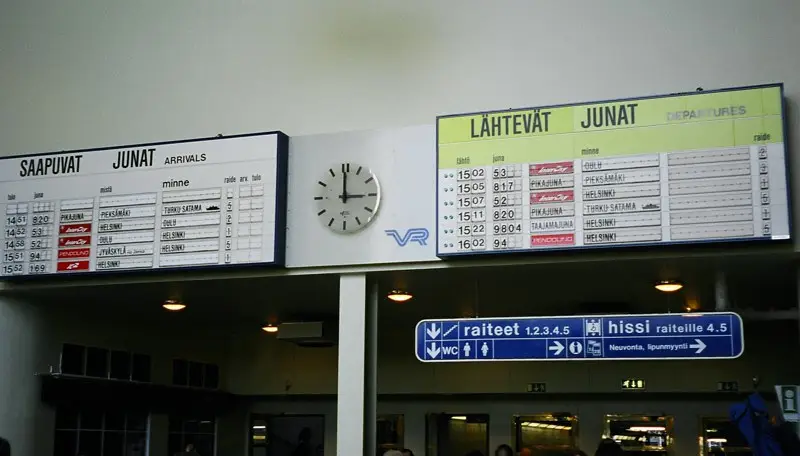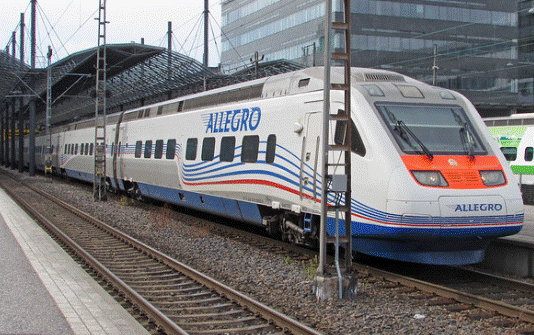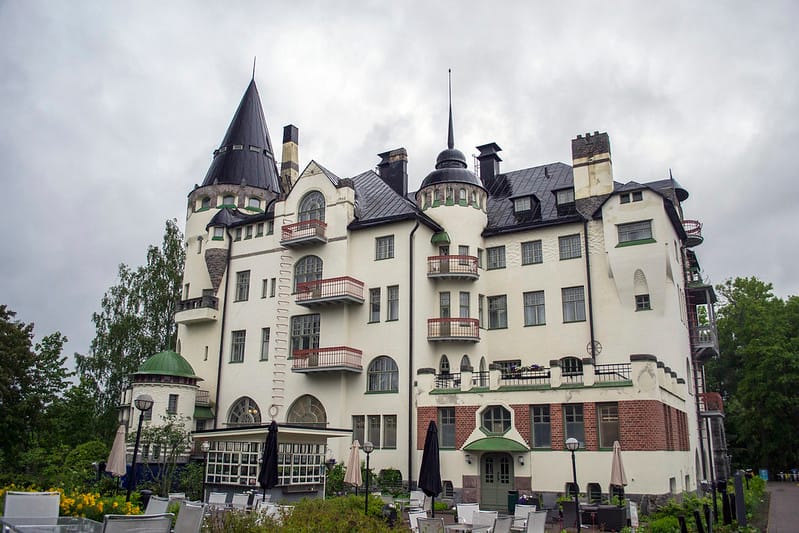Finland has a well deserved reputation for doing things on a human scale, and this extends to its transport system. From train cabins with onboard playrooms to efficient public buses and well-maintained highways, traveling around the country is a breeze.
The Pendolino trains are bringing progressive improvements to routes around the country. Download PDFs of suburban route and station departure timetables through the Järjestelmäsäännöstön website.
Tram
The city has a tram network with a mix of modern Bombardier equipment and mid-life Finnish built stock. The city centre has two circular routes, 3T operating clockwise and 3B anticlockwise, which are heavily marketed to tourists; pamphlets are produced in several languages extolling the various sites passed.
The tram network has a large interchange with the metro. The station is located in central Helsinki on the Kluuvi street at Kaivokatu 1. It serves both commuter rail services and a private express coach operated for Finnair.
The HSL website has a point-to-point local journey planner; enter an address or a date/time and it gives options for bus, tram and train connections. It also offers a PDF timetable for long distance services. Tickets can be purchased from ticket machines at the airport, from R-kioskis (small service fee applies) and HSL service points or on trains from staff using payment cards. Commuter rail and Metro tickets are valid on buses.
Bus
With around 40 bus lines connecting Helsinki with suburbs and villages, buses are the backbone of public transport in this part of Finland. Ticket machines at the front of most buses accept regular public transport cards. On-board snacks and drinks are surprisingly affordable, though it is best to bring your own bottle of water.
Unlike the metro, most bus routes operate until 1:30am on weekends. For longer journeys it is a good idea to take a combination of bus and train.
The Central railway station is a major hub for long-distance travel in Finland. High-speed Pendolino trains link major cities while InterCity and Express trains run between smaller hubs. Long-distance sleeper buses are also an option, providing comfy airplane-style seats or sleeping berths upstairs or downstairs (for an extra fee).
A number of ferry routes connect the city to neighbouring islands. The ferries are operated by Finferries, which offers 40 routes around the country. The World Heritage sea fortress of Suomenlinna is a particularly popular destination.
Metro
For those who prefer to travel by train, there’s a choice of fast InterCity and Pendolino services between Helsinki and the major cities or slower Regional and Express rides. On-board perks include on-board children’s play areas, licensed dining cars and extensive support for travelers with disabilities.
The main line runs from Matinkyla through central Helsinki to the eastern suburbs where it forks to a branch line to Martinlaakso and a short tunnel loop (pisara) to Pasila station. The metro has eight principal tracks funneled into express and local routes with the latter positioned at the outermost edges of the platform layout.
The tracks pass under Helsinki Central Station allowing passengers to transfer to and from the commuter rail network, including trains on the Ring Rail Line to Helsinki Airport. During peak traffic periods the station operates close to its transport capacity and even the slightest disruption at the railway yard can mess up all trains.
Ferry
While flying is faster, taking a ferry offers a much more comfortable journey between Helsinki and Stockholm or between Helsinki and Tallinn. The Stockholm to Helsinki route runs seven days a week and takes about 17.5 hours one-way. Onboard services include bars, restaurants, and different types of cabins, and car and motorcycle transport is available as well.
Ferries depart from the Port of Helsinki, about 4 km from downtown. Tallink Silja, Eckero Line, and Viking Line operate ferries from West Harbor Terminal 2, while Stena Line ferries leave from Katajanokka and Hansa terminals. Near each dock, you will find restrooms, public transportation links, and stores.
A regional ABC ticket is required for most journeys, and you can buy tickets from the bus driver or from a vending machine. In many areas, local announcements are made in both Finnish and Swedish. Using a mobile phone app like Ferryhopper makes planning easier, as it automatically translates announcements and displays them in the language you choose.


